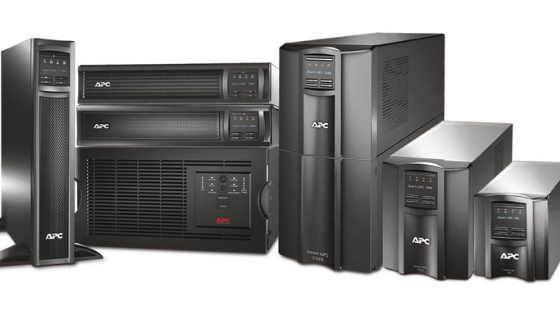How Power Distribution can be made effective with Smart UPS?
Power consumption is an important factor in modern companies based on IT infrastructure. All companies use computers and laptops for daily business operations. So, they need to use UPS to ensure the uninterrupted power supply for computers and different other hardware equipment. With the proper use of smart UPS, you can ensure a healthy distribution of power. But how? Let’s discuss
Power consumption of some important hardware equipment:
Equipment
|
Power consumption
|
Server
|
500 VA
|
Standard PC
|
500 VA
|
Multimedia PC
|
250 VA
|
Network Server
|
750 VA
|
Dump Terminal
|
100 VA
|
PC Terminal
|
150 VA
|
14 inch monitor
|
75 VA
|
15 inch monitor
|
100 VA
|
17 inch monitor
|
150 VA
|
Inkjet Printer
|
100 VA
|
Dot-Matrix Printer
|
150 VA
|
Laser Printer
|
500 VA
|
A3 Laser Printer
|
750 VA
|
Network Printer
|
750 VA
|
Browser
|
100 VA
|
Safe
|
300 VA
|
Router
|
200 VA
|
PBX Telephone Exchange
|
300 VA
|
Fax
|
100 VA
|
Modem
|
50 VA
|
Wireless Phone
|
20 VA
|
20 Watt Bulb
|
30 VA
|
30 Watt Bulb
|
45 VA
|
40 Watt Bulb
|
65 VA
|
70 watts color TV
|
150 VA
|
What Exactly is a UPS?
A UPS is equipment between your electrical power supply and electronic system that protects components inside the system from abnormal electrical current or ups and downs. The output power may vary over a wide range. The power conversion structures may be single-phase for domestic use and three-phase for industrial/commercial use.
What are the main functions of UPS?
Always keep in mind that UPS provide backup power if the current supplying your computer system is reduced or depleted as a result of a voltage drop or a sudden power outage. Apart from this, during the short-term and long-term increases in voltage, it protects the equipment you are using. UPSs ensure that the system continues to operate normally in the event of a power failure all of a sudden.
It gives you enough time to save your work and shut down your system in a healthy way. The power supplies of the personal computers used in the home are supplied from a single phase UPS ranging from 500 VA to 1000 VA depending on the output power, computer and peripheral equipment (monitor, printer, fax-modem, etc.). In most cases, line-interactive UPSs are sufficient for PC use. For advanced architectures (such as server systems), on-line UPS systems are widely used.
How UPS ensures healthy power distribution?
● Digital Control System
The Control System implemented with DSP technology in UPS systems work nicely with floating point controllers, complex control algorithms. It successfully prevents the failure and interruption of power supply to hardware equipment and keeps UPS and loads safe.
● Automatic And Manual Battery Test
Because of advanced battery management, the UPS provides real-time information about battery capacity and backup time. You can view this information in the front panel. At certain user-adjustable intervals, UPS tests batteries without shutting down the system. You can do this work automatically or manually. UPS allows battery replacement without disconnecting the battery unit because of its "hot-swap" feature.
● High Efficiency In terms of Power Distribution
Many UPS systems consume less energy to feed the load and power distribution efficiency reaches up to 93%. Always keep in mind that This high efficiency reduces the amount of energy converted to heat. So, the cost of the cooling system is reduced. The consumption of electricity is also reduced up to a great extent.
● Increased Life of Hardware Equipment
The proper use of a UPS Power Supply system helps you to work smoothly on your PC and close it as per the standard procedure. It prevents damages to the hardware and increases the life expectancy of electronic equipment.
Final Words
Now, it's clear that UPS's are an indispensable component of network servers. Individuals use it to ensure uninterrupted power supply to hardware equipment, ensure the proper distribution of power, and save some bucks on power consumption.



Comments
Post a Comment